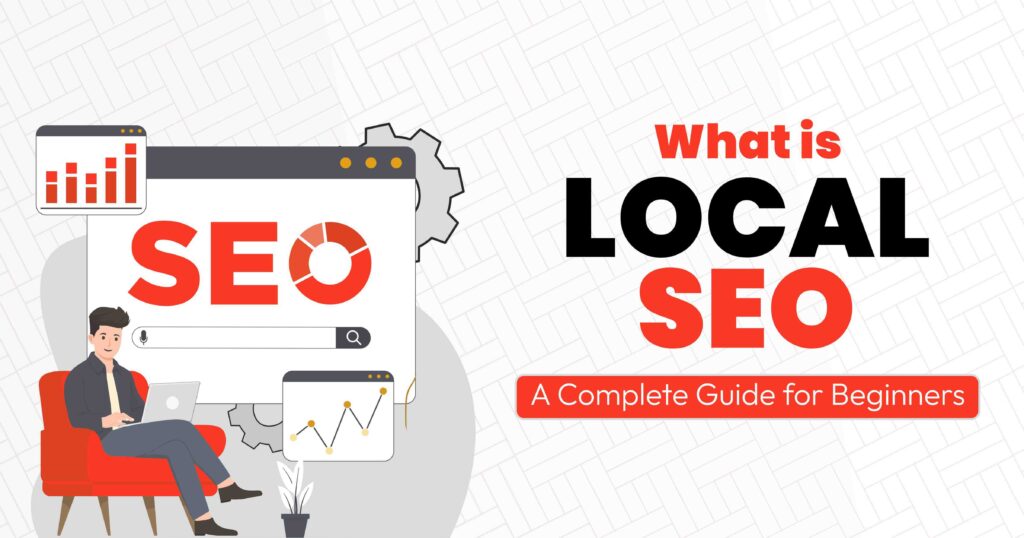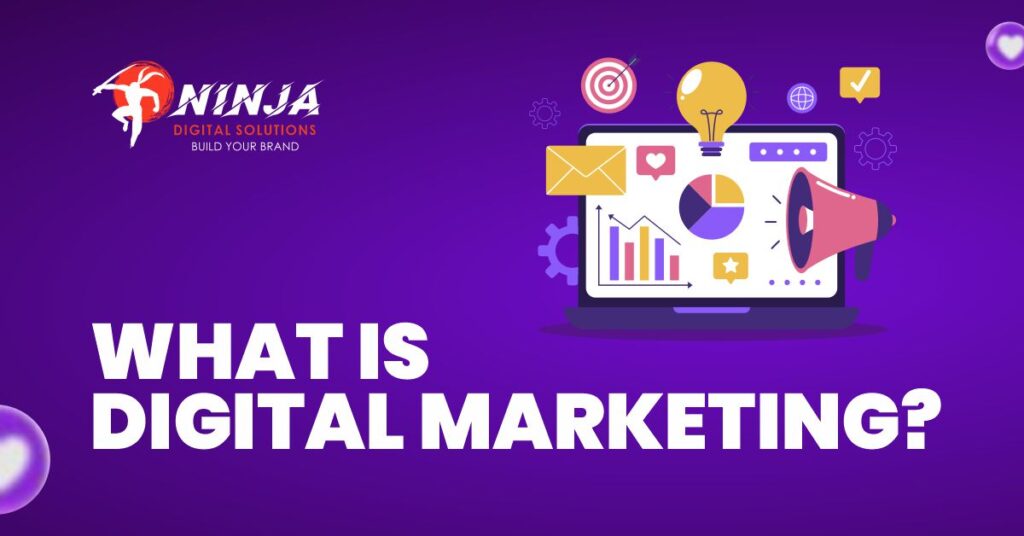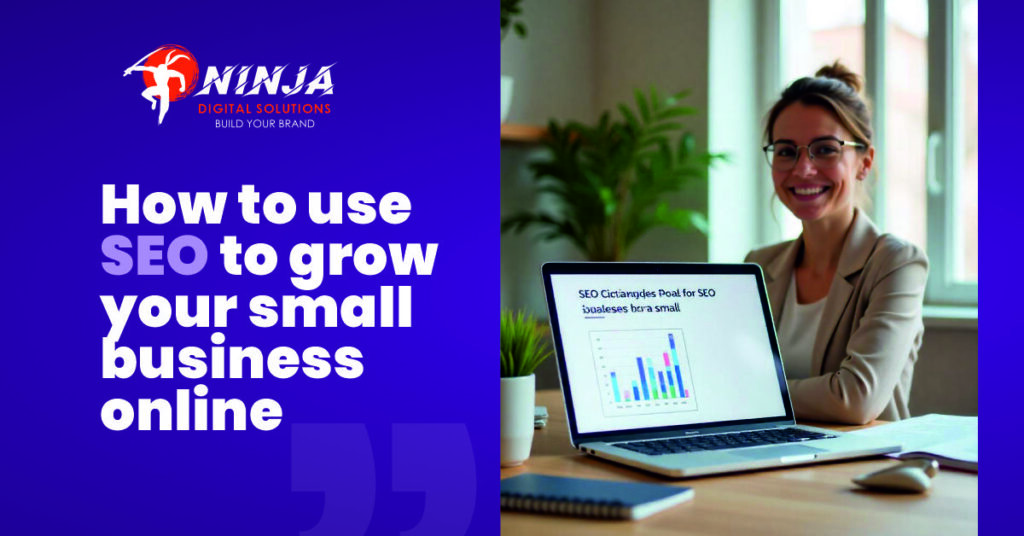What is Local SEO – A Complete Guide for Beginners

In today’s digital world, people no longer flip through phone books to find local businesses; they simply pull out their phones and search on Google. If someone types in “best coffee shops near me” or “plumbers in Gwalior,” Google instantly shows them nearby businesses that match their needs.
This is where Local SEO (Search Engine Optimization) comes in. It’s the strategy that helps your business appear in those location-based searches so you can connect with customers right when they’re looking for you.
According to Google, 46% of searches are local—meaning people are looking for products, services, or businesses in their area. If your business isn’t optimized for local search, you’re missing out on a huge opportunity.
What is Local SEO?
Local SEO, or local search engine optimization, is a digital marketing approach that helps businesses increase their online presence in local search results. It is essential for businesses that have a physical location or that offer services in a specific geographic area, such as restaurants, retailers, and service providers. Local SEO ensures that a business appears prominently in search results when potential customers search for goods or services in that area.
Unlike traditional SEO, which focuses on ranking your website on a global or national level, local SEO targets customers in your specific geographic area. It is also known as “Google Business Profile” and previously “Google My Business Profile”.
Example:
- SEO: Ranking for “best bakery” globally.
- Local SEO: Ranking for “best bakery in Gwalior” or “bakery near me.”
This approach is crucial for:
- Brick-and-mortar stores
- Service-area businesses
- Local professionals like doctors, lawyers, or consultants
If your business serves a community or region, Local SEO is not optional, it’s essential.
How Does Local SEO Work?
Local SEO relies on Google’s local search algorithm, which considers three main factors:
- Relevance – How closely your business matches the search query.
- Proximity – How close your business is to the searcher’s location.
- Prominence – How well-known and reputable your business is online.
When someone searches with local intent, Google often shows:
- The Local Pack: A boxed area with a map and the top 3 local business listings.
- Google Maps results: Detailed business info with directions, reviews, and contact details.
For example, if someone searches “dentist near me,” Google displays nearby dental clinics with ratings, hours, and phone numbers.
Key Elements of Local SEO
Google Business Profile Optimization
Google Business Profile (GBP) serves as your online storefront. An optimized profile increases your chances of appearing in the Local Pack.
Tips for optimization:
- Fill in every detail: Name, address, phone, website, hours.
- Select the right business categories.
- Add high-quality photos and videos.
- Post regular updates about offers, events, or news.
Local Keywords
Using location-specific keywords helps you rank for local searches.
Example: Instead of “bakery,” use “bakery in Connaught Place” or “Gwalior birthday cakes.”
Where to add keywords:
- Website headings and content
- Meta descriptions and titles
- Google Business Profile description
NAP Consistency
NAP stands for Name, Address, Phone number. These details must be exactly the same across all platforms — website, Google profile, social media, and directories.
Even small differences like “St.” vs “Street” can cause ranking issues.
Online Reviews and Ratings
Positive reviews build trust and improve your visibility. Google considers review quantity, quality, and recency when ranking local businesses.
Best practices:
- Ask happy customers for reviews.
- Respond to all reviews — positive or negative.
- Keep reviews authentic and relevant.
Local Citations and Directories
A citation is any mention of your business online. Getting listed on trusted directories like Yelp, Justdial, Sulekha, and IndiaMart boosts local authority.
Benefits of Local SEO
- More Local Visibility: Appear when nearby customers are searching.
- Higher Foot Traffic: Drive more walk-ins to your store or office.
- Better Conversion Rates: Local searchers are often ready to buy.
- Builds Trust: Good reviews and visibility improve your brand’s credibility.
- Cost-Effective: More affordable than traditional ads and highly targeted.
Common Mistakes to Avoid in Local SEO
- Incomplete or outdated Google Business Profile.
- Wrong or inconsistent contact details.
- Ignoring mobile optimization.
- Not asking for or responding to reviews.
- Using generic keywords instead of location-specific ones.
How to Measure Local SEO Success
Tracking your performance ensures your Local SEO strategy is working.
Key metrics to track:
- Local rankings: Where you appear for local keywords.
- Website traffic: Visits from local searches.
- Google Business Profile insights: Calls, direction requests, and clicks.
- Review activity: Number and quality of reviews over time.
Conclusion
Local SEO is more than just a marketing trend; it’s a must-have for any business that services a local market. You can reach the right customers at the right time by optimizing your Google Business Profile, using local keywords, maintaining NAP consistency, and establishing good reviews.
If you need expert assistance in increasing your local presence, consider working with a competent Local SEO provider that understands your market. When done correctly, Local SEO may provide you consistent leads, loyal consumers, and long-term success.
Frequently Asked Questions About Local SEO
1. What is the difference between SEO and Local SEO?
SEO helps websites rank on a global or national level, while Local SEO focuses on improving visibility for location-specific searches. For Example With SEO, you’d optimize for “affordable dentist”, but with Local SEO, it becomes “dentist in Gwalior” or “dentist near me”
2. Why is Local SEO important for small businesses?
Local SEO helps small businesses appear in local search results, making it easier for nearby customers to find them. This drives more foot traffic, phone calls, and leads without spending heavily on traditional ads.
3. How does Google decide which local businesses to show?
Google’s local algorithm considers three main factors:
- Relevance (how closely your business matches the query),
- Proximity (how near your business is to the searcher),
- Prominence (your reputation online, reviews, and authority).
4. How can I improve my Local SEO quickly?
Start by:
- Optimizing your Google Business Profile with accurate details and photos.
- Using local keywords on your website.
- Keeping NAP (Name, Address, Phone) consistent across platforms.
- Asking customers to leave authentic reviews.
5. How do I measure the success of Local SEO?
You can track Local SEO performance through:
- Local keyword rankings in Google search.
- Google Business Profile insights (calls, clicks, direction requests).
- Website traffic from local searches.
- Growth in reviews and engagement from nearby customers.

